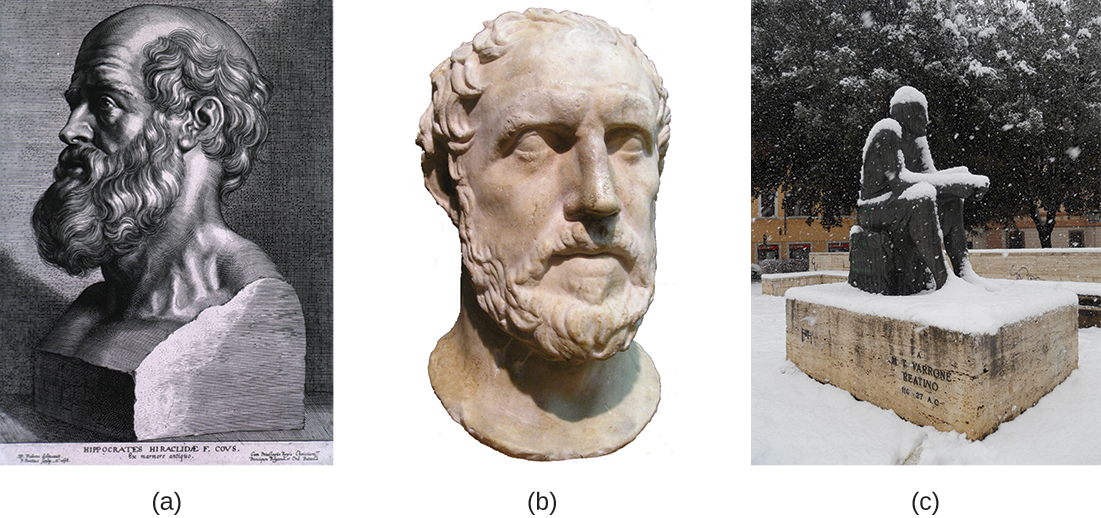| << Chapter < Page | Chapter >> Page > |
Marcus Terentius
Varro (116–27 BC) was a prolific Roman writer who was one of the first people to propose the concept that things we cannot see (what we now call microorganisms) can cause disease (
[link] ). In
Res Rusticae (
On Farming ), published in 36 BC, he said that “precautions must also be taken in neighborhood swamps
. . . because certain minute creatures [
animalia minuta ] grow there which cannot be seen by the eye, which float in the air and enter the body through the mouth and nose and there cause serious diseases.”
Plinio Prioreschi.
A History of Medicine: Roman Medicine . Lewiston, NY: Edwin Mellen Press, 1998: p. 215.

While the ancients may have suspected the existence of invisible “minute creatures,” it wasn’t until the invention of the microscope that their existence was definitively confirmed. While it is unclear who exactly invented the microscope, a Dutch cloth merchant named Antonie van Leeuwenhoek (1632–1723) was the first to develop a lens powerful enough to view microbes. In 1675, using a simple but powerful microscope, Leeuwenhoek was able to observe single-celled organisms, which he described as “animalcules” or “wee little beasties,” swimming in a drop of rain water. From his drawings of these little organisms, we now know he was looking at bacteria and protists. (We will explore Leeuwenhoek’s contributions to microscopy further in How We See the Invisible World .)
Nearly 200 years after van Leeuwenhoek got his first glimpse of microbes, the “ Golden Age of Microbiology ” spawned a host of new discoveries between 1857 and 1914. Two famous microbiologists, Louis Pasteur and Robert Koch , were especially active in advancing our understanding of the unseen world of microbes ( [link] ). Pasteur, a French chemist, showed that individual microbial strains had unique properties and demonstrated that fermentation is caused by microorganisms. He also invented pasteurization, a process used to kill microorganisms responsible for spoilage, and developed vaccines for the treatment of diseases, including rabies, in animals and humans. Koch, a German physician, was the first to demonstrate the connection between a single, isolated microbe and a known human disease. For example, he discovered the bacteria that cause anthrax ( Bacillus anthracis ), cholera ( Vibrio cholera ), and tuberculosis ( Mycobacterium tuberculosis ). S.M. Blevins and M.S. Bronze. “Robert Koch and the ‘Golden Age’ of Bacteriology.” International Journal of Infectious Diseases . 14 no. 9 (2010): e744-e751. doi:10.1016/j.ijid.2009.12.003. We will discuss these famous microbiologists, and others, in later chapters.

Notification Switch
Would you like to follow the 'Microbiology' conversation and receive update notifications?